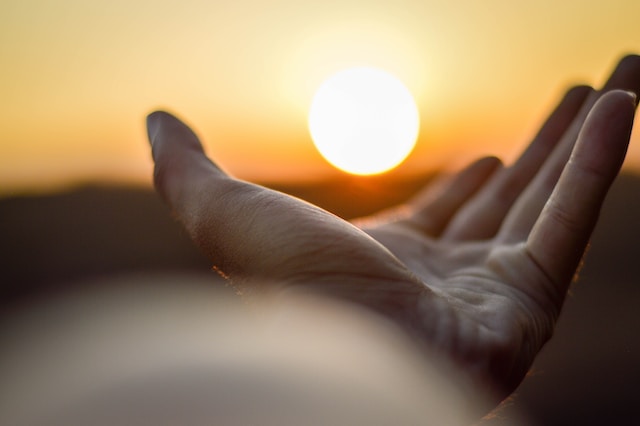
For centuries, humans have been exploring the practice of meditation in various forms. Meditation has a rich and varied history, rooted in ancient spiritual traditions and philosophical teachings.
One of the earliest documented references to meditation can be found in the Hindu scriptures known as the Vedas, which date back to around 1500 BCE. These texts describe various aspects of meditation and its role in finding inner stillness and calm.
In Buddhism, meditation is seen as a path towards enlightenment and liberation from suffering. The Buddha himself famously achieved enlightenment through meditation, and his teachings have influenced countless practitioners over the centuries.
The practice of meditation also played a significant role in Taoism, a philosophical and spiritual tradition that originated in China around the same time as Buddhism. Taoist meditation focuses on cultivating a strong connection with nature and the flow of energy through the body.
In the 20th century, meditation began to gain popularity in the West, thanks in part to the efforts of pioneering teachers like Maharishi Mahesh Yogi and Jon Kabat-Zinn. Today, meditation continues to be a widely practiced form of stress reduction, self-improvement, and spiritual growth, with many different styles and approaches available to suit a range of needs and preferences.
From ancient spiritual traditions to modern secular mindfulness practices, the history of meditation is a testament to its enduring power to help us connect with our inner selves and find peace in an often chaotic world.
Early Origins of Meditation
In the mists of prehistory, humans sought moments of contemplation and introspection, which laid the foundation for meditation. Cave paintings, archaeological artifacts, and anthropological studies suggest that early humans engaged in ritualistic practices that resembled meditation. These practices aimed to deepen their connection with the natural world and tap into a spiritual realm.
Meditation in ancient civilizations

The Indus Valley Civilization, flourishing around 2600-1900 BCE, provides evidence of early yogic practices. Yoga, which encompasses physical postures, breath control, and meditation, was intertwined with the religious and philosophical beliefs of the time.
Ancient Egypt revered meditation as a sacred art. The practice of “heka,” meaning “magic” or “divine utterance,” involved deep contemplation, visualization, and incantations. Egyptians sought to commune with their gods and access higher realms of consciousness through meditation.
Ancient China witnessed the development of Taoist philosophy, which emphasized harmony with nature and the cultivation of inner balance. Taoist meditation, known as “dǎo yǐn,” involved physical movements, breath control, and visualization techniques to align the body, mind, and spirit. It aimed to attain tranquility, longevity, and spiritual enlightenment.
Meditation in Ancient India
In ancient India, the history of meditation found its roots in the Vedic period (1500-500 BCE). The Vedas, a collection of sacred texts, contain references to meditative practices, highlighting the quest for spiritual realization and the pursuit of higher knowledge.
Development of meditation techniques in Hinduism:
The Upanishads, philosophical treatises within Hindu scriptures, delved into the nature of reality and the self. They introduced Jnana Yoga, the path of knowledge, which emphasized deep contemplation, self-inquiry, and the realization of one’s true nature.
Bhakti Yoga, the path of devotion, emphasized the cultivation of love, devotion, and surrender to a chosen deity. Through devotional practices such as mantra repetition, chanting, and visualization, individuals sought to merge their consciousness with the divine.
Karma Yoga, the path of selfless action, emphasized performing one’s duties without attachment to the results. By engaging in selfless acts and maintaining equanimity, individuals aimed to transcend egoic tendencies and attain a state of self-realization.
The emergence of Buddhism and meditation:
The birth of Buddhism in the 5th century BCE marked a significant milestone in the history of meditation. Siddhartha Gautama, the historical Buddha, renounced worldly life and embarked on a spiritual quest. Through intense meditation practices, he attained enlightenment and discovered the Four Noble Truths and the Eightfold Path.

The Buddhist tradition introduced mindfulness and Vipassana (insight) meditation. Mindfulness involved cultivating present-moment awareness, while Vipassana aimed to develop insight into the impermanent and selfless nature of reality. These practices spread throughout various Buddhist traditions and continue to influence meditation practices today.
Spread of Meditation to East Asia
Introduction of Meditation in China
Taoism and Confucianism played pivotal roles in shaping meditation practices in China. Taoist principles of harmony, balance, and the cultivation of the “Way” influenced the development of meditation techniques. Confucian teachings also incorporated meditation as a means of self-cultivation and moral development.
The arrival of Buddhism in China led to the development of Chan Buddhism, later known as Zen Buddhism. Zen meditation (Zazen) emphasized seated meditation, breath awareness, and direct experiential realization. It sought to transcend conceptual thinking and attain direct insight into one’s true nature.
Meditation in Japan

Zen Buddhism made its way to Japan in the 12th century and flourished under the influence of notable Zen masters. The practice of Zazen became central to Japanese Zen Buddhism, emphasizing sitting meditation as a means to achieve awakening and enlightenment.
Zen meditation deeply influenced Japanese culture, leaving a lasting impact on various aspects such as tea ceremonies, martial arts, flower arranging (ikebana), and calligraphy. Zen principles of mindfulness, presence, and non-dual awareness permeated the fabric of Japanese society.
Meditation in the Middle Ages and Renaissance
During the Middle Ages, Christian mystics such as Meister Eckhart and Saint John of the Cross emphasized contemplative practices as a means of direct union with God. They engaged in deep prayer, meditation, and silent reflection to transcend the boundaries of the egoic self and commune with the divine.
The Desert Fathers and Mothers, ascetic hermits of the early Christian era, sought solitude in the deserts of Egypt and Syria. Their practices of solitude, meditation, and prayer contributed to the development of contemplative traditions within Christianity.
Sufism and Islamic Meditation
Sufism, the mystical dimension of Islam, incorporated meditation as a means of attaining spiritual union with the divine. Sufi practitioners engaged in various forms of meditation, including breathing exercises, mantra repetition, and contemplative reflection.
The emphasis on direct experience, love, and surrender by Sufism influenced Islamic mysticism and the development of poetic and contemplative traditions within Islamic culture. Sufi meditation practices aimed to dissolve the ego and achieve spiritual awakening.
Meditation in Modern Times

The 20th century witnessed a resurgence of interest in meditation, driven in part by Maharishi Mahesh Yogi and the popularity of Transcendental Meditation (TM). TM introduced a simplified technique involving the repetition of a mantra, attracting millions worldwide and influencing popular culture.
Meanwhile, the Theosophical Society, founded by Helena Blavatsky and others, facilitated the dissemination of Eastern philosophies, including meditation practices, to the Western world. The society’s teachings and writings helped popularize meditation and spirituality beyond traditional religious frameworks.
Meditation in Scientific and Medical Contexts
Jon Kabat-Zinn developed the Mindfulness-Based Stress Reduction program, integrating Buddhist mindfulness practices into a secular context. MBSR gained recognition for its therapeutic benefits, reducing stress, and enhancing well-being.
Scientific studies in the late 20th and early 21st centuries have shed light on the positive effects of meditation on mental and physical health. Research indicates that regular meditation practice can reduce stress, improve focus and attention, promote emotional well-being, and enhance overall quality of life.
Contemporary Meditation Practices and Movements
Vipassana meditation, rooted in Buddhist traditions, has gained popularity globally. Organizations like the Insight Meditation Society (IMS) have contributed to the spread of Vipassana, offering retreats and training for individuals seeking to deepen their meditation practice.
The mindfulness movement has permeated various sectors of society, including education, healthcare, and corporate environments. Mindfulness-based interventions, such as Mindfulness-Based Cognitive Therapy (MBCT), have been incorporated into therapeutic approaches and wellness programs.
The history of meditation reveals its profound and enduring presence in human civilizations throughout the ages. From its prehistoric origins to its modern-day applications, meditation has evolved and adapted, influenced by diverse cultures, religions, and philosophical traditions. Its impact on individual well-being, spiritual growth, and global consciousness cannot be overstated. By understanding the historical development of meditation, we can appreciate its transformative power and continue to explore its potential for personal and collective evolution.
